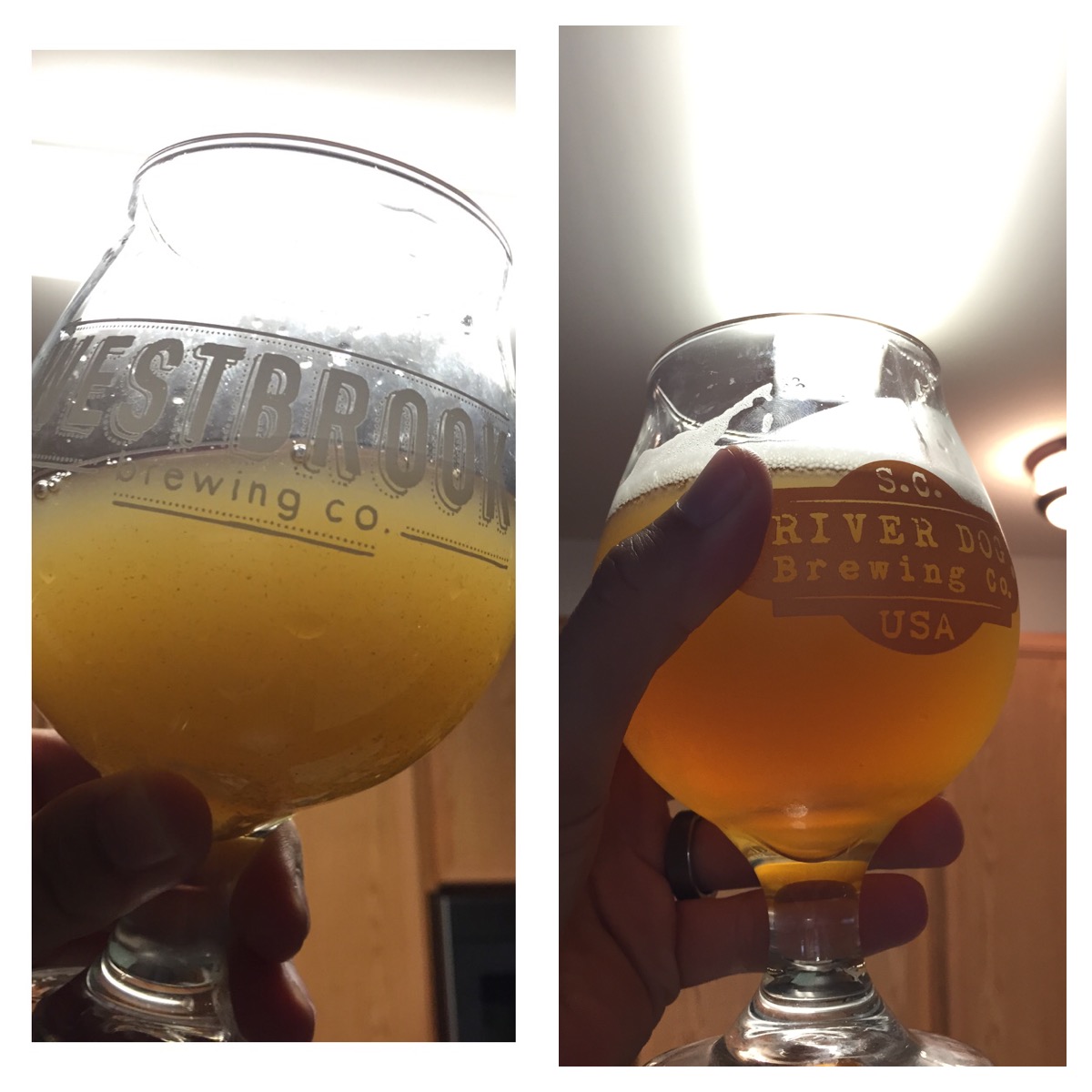Beware of long post...
Only after a week of conditioning I had to try a beer. I know it's super early but I had to. So I put one in the fridge on the seventh day and let it sit for two days. Attached is a picture of pre-bottled beer and post-bottled beer.
On first pour beer smelled pretty darn good and tasted pretty darn good. But that quickly faded to just a cloying sweetness after about 10 minutes. I'm still not sure what could be causing this.
Here's my recipe:
BIAB
Batch Size: 2.5 gallons
OG: 1.059
FG: 1.006
ABV: 7%
IBU: 70
SRM: 6.1
3272 g 2 Row92%7.2 lbs
40 g Caramel 40 1.1%.08 lbs
40 g Caramel 10 1.1%.08 lbs
40 g Carapils 1.1%.08 lbs
50 g Corn Sugar 1.4%
Gypsum: 8.3 grams
Epsom Salt: .5 grams
Calcium Chloride: 1.9 grams
Lactic Acid: 1.2 mL
Estimated SRM: 5.0 via BruN
Estimated mash pH: 5.3
Ca: 128
Mg: 4
Na: 23
SO4: 275
Cl: 65
Kept mash temp between 148-151.
.25 ozWarrior 16.5 AA%FWH 31 IBU
.2 ozSimcoe 11.1 AA%15 min 8 IBU
.4 ozCentennial 8.7 AA%15 min12 IBU
.4 ozAmarillo 8 AA% 15 min11 IBU
.8 ozSimcoe 11.1 AA% 0 min steep for 30 min before cooling
1 ozCentennial 8.7 AA%0 min steep for 30 min before cooling
1 ozAmarillo 8 AA% 0 min steep for 30 min before cooling
.6 ozSimcoeDry Hop 2 days
.7 oz CentennialDry Hop 2 days
.65 ozAmarillo Dry Hop 2 days
ALL HOPS USED WERE IN PELLET FORM
American Ale yeast slurry about 80 ml
A couple of things about the beer itself and a couple of things I did differently with this brew in hopes of it turning out great:
1. First off my OG: 1.06 and my FG: 1.011. So a little off but not bad. This could be some of the sweetness I get.
2. Almost 50% of my mash water I grabbed from my fridge filter that I drink my water from. Have never done that before.
3. Used a lot of gypsum to get sulfate super high. Not only do I like my IPAs to finish dry from a low mash but I wanted to try a high sulfate and see what that did.
4. Used the smallest amount of crystal malt I've ever used. And it still came out sweet. I'm thinking of getting rid of all crystal malt in my next brew and seeing how that goes.
5. Made sure I had a nice rolling boil while wort was in the kettle instead of a vigorous one. To hopefully help with milliard reaction and browning of wort.
6. Bought new tubing for my auto-siphon.
7. After filling bottles with bottle wand, I laid a cap on top of them while I filled the rest and capped all beer once I was done.
I am bottle conditioning in my house which during this time is staying between 74*-79*. With all that being said the beer loses hop aroma and flavor quickly and turns cloying.
We do have chloramine in our water so maybe next brew I'll try all distilled or RO water and try to go from there. Even though I won't really know how to build my water profile from those. I do not have any campden tablets for the chloramine in the mash. Maybe I can find some ASAP.
Any suggestions or ideas?



